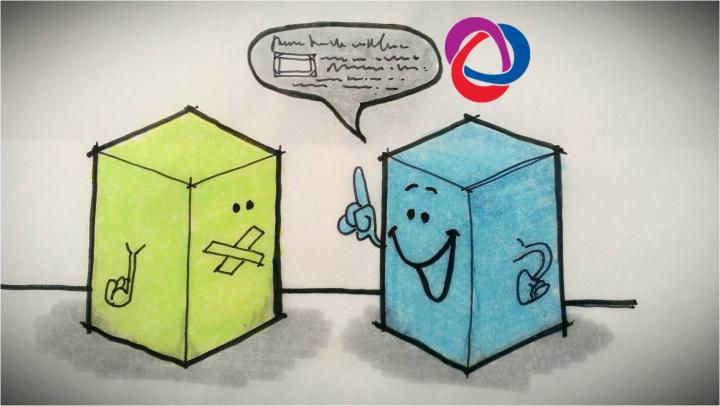Login
Our 3D CAD supplier models have been moved to 3Dfindit.com, the new visual search engine for 3D CAD, CAE & BIM models.
You can log in there with your existing account of this site.
The content remains free of charge.

Top Links
Pin Details
BCF. BIM Collaboration Format Explained
The two words ‘information’ and ‘communication’ are often used interchangeably, but they signify quite different things. Information is giving out; communication is getting through*
As complete and accurate as a BIM model can be, at the end it is only a recipient of information, it can’t speak for himself; so in order to get the message through you need something else, you need to tell the story. BFC files do exactly that: they tell the story.
BCFZIPcomposition
BCF files tell stories about Design by providing clear communication. The way it works is by creating “issues” with “comments” written by “authors”, then adding snapshots and then linking the issue to building elements. These comments form the body of the discussion and the story of a design issue; the author field or parameter helps recreating the dialogue and the snapshots helps everyone to see the issue graphically. All of this helps design managers to keep track of issues as design evolves and gets fine tuned, and it saves time by sending a clear message about changes across disciplines.
Again, clear communication is critical as many interpretations can be given to badly modeled elements. Models can’t certainly speak for the elements that are not in place; and even with software that can differentiate new and modified elements from the rest you still need to provide a contextual argument to enrich the message and reveal the design intention. It is true as well that at some point you will have to discuss, mark up and register the changes and issues of every design iteration between trades. You already know that design coordination goes beyond clash detection, and you should know how important is to keep track of changes. BCF files also do that: they keep track of issues – regardless of software authoring platforms.
An acronym inside an acronym
BCF is an acronym for BIM Collaboration Format, and what the file format does is to store the history of design Issues as a database without storing model elements of any kind. In essence it is a list of Issues (by name) of the models, enriched with Snapshots (images), Comments (by authors) and Status, that can be linked to building elements (via GUID).
The file format is actually BCFzip not BCF and it’s based on the XML schema . It is similar to the AGCxml format for RFIs developed by the Associated General Contractors of America, the similarities may be intentional. Being XML based makes it “modular” so it can grow by adding to it without having to overwrite it completely, and it have been proved reliable and useful by the AGCA. BCFzip files can be open /saved only from a bunch of applications for now (as per May 2014) including: Tekla BIMSight, Solibri, Graphisoft ArchiCAD18, DDS-CAD natively, and by Plug-ins like KUBUS BCF Manager or Matteo Cominetti’s BCF plugin for Graphisoft ArchiCAD and Autodesk Revit and Navisworks respectively.
As complete and accurate as a BIM model can be, at the end it is only a recipient of information, it can’t speak for himself; so in order to get the message through you need something else, you need to tell the story. BFC files do exactly that: they tell the story.
BCFZIPcomposition
BCF files tell stories about Design by providing clear communication. The way it works is by creating “issues” with “comments” written by “authors”, then adding snapshots and then linking the issue to building elements. These comments form the body of the discussion and the story of a design issue; the author field or parameter helps recreating the dialogue and the snapshots helps everyone to see the issue graphically. All of this helps design managers to keep track of issues as design evolves and gets fine tuned, and it saves time by sending a clear message about changes across disciplines.
Again, clear communication is critical as many interpretations can be given to badly modeled elements. Models can’t certainly speak for the elements that are not in place; and even with software that can differentiate new and modified elements from the rest you still need to provide a contextual argument to enrich the message and reveal the design intention. It is true as well that at some point you will have to discuss, mark up and register the changes and issues of every design iteration between trades. You already know that design coordination goes beyond clash detection, and you should know how important is to keep track of changes. BCF files also do that: they keep track of issues – regardless of software authoring platforms.
An acronym inside an acronym
BCF is an acronym for BIM Collaboration Format, and what the file format does is to store the history of design Issues as a database without storing model elements of any kind. In essence it is a list of Issues (by name) of the models, enriched with Snapshots (images), Comments (by authors) and Status, that can be linked to building elements (via GUID).
The file format is actually BCFzip not BCF and it’s based on the XML schema . It is similar to the AGCxml format for RFIs developed by the Associated General Contractors of America, the similarities may be intentional. Being XML based makes it “modular” so it can grow by adding to it without having to overwrite it completely, and it have been proved reliable and useful by the AGCA. BCFzip files can be open /saved only from a bunch of applications for now (as per May 2014) including: Tekla BIMSight, Solibri, Graphisoft ArchiCAD18, DDS-CAD natively, and by Plug-ins like KUBUS BCF Manager or Matteo Cominetti’s BCF plugin for Graphisoft ArchiCAD and Autodesk Revit and Navisworks respectively.







